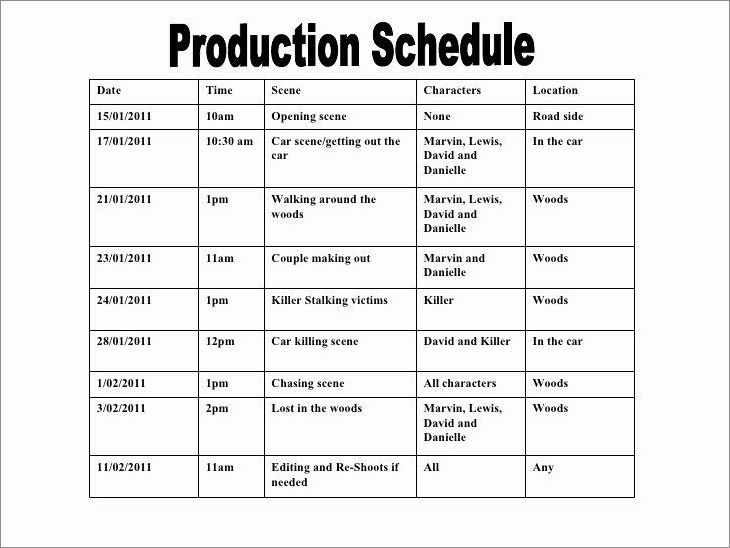When it comes to the world of filmmaking, a well-planned and organized film schedule is crucial for a successful production. From pre-production to post-production, having a clear timeline for each stage of the filmmaking process ensures that everything runs smoothly and efficiently.
In this article, we will explore the importance of a film schedule and provide you with all the information you need to create an effective one.
What is a Film Schedule?
A film schedule is a detailed plan that outlines the timeline and sequence of events for a film production. It includes important information such as shooting dates, locations, scenes to be filmed, cast and crew availability, and any necessary permits or permissions. A film schedule serves as a roadmap for the entire production team, ensuring that everyone is on the same page and aware of what needs to be done at each stage of the filmmaking process.
Why is a Film Schedule Important?
A film schedule is important for several reasons:
- Efficiency: A well-planned film schedule helps maximize efficiency by ensuring that each day of shooting is utilized to its fullest potential. It allows the production team to make the most of their time and resources, minimizing downtime and unnecessary delays.
- Budget Control: A film schedule helps control the budget by accurately estimating the time and resources required for each stage of the production. It allows the production team to allocate funds wisely and avoid overspending.
- Collaboration: A film schedule promotes collaboration among the cast and crew. It provides a clear timeline for each department, allowing them to coordinate their efforts and work together seamlessly.
- Flexibility: While a film schedule provides structure, it also allows for flexibility. It can be adjusted and adapted as needed to accommodate unforeseen circumstances or changes in the production plan.
How to Create a Film Schedule
Creating a film schedule requires careful planning and attention to detail. Here are the steps to follow:
1. Determine the Project Timeline
Start by determining the overall timeline for your film project. Consider factors such as the script length, shooting locations, and post-production requirements. This will help you establish a realistic timeframe for each stage of the production.
2. Break Down the Script
Break down the script into scenes and determine which scenes can be filmed together based on location, cast availability, and production design requirements. Grouping scenes helps optimize shooting schedules and reduces the need for multiple set-ups.
3. Identify Key Production Requirements
Identify any special production requirements, such as stunts, special effects, or complex set builds. These elements may require additional time and resources, so it’s important to factor them into your schedule.
4. Consider Cast and Crew Availability
Take into account the availability of your cast and crew when creating the schedule. Coordinate with their agents or representatives to ensure that everyone’s schedules align and that there are no conflicts.
5. Plan for Contingencies
Anticipate potential delays or setbacks and build in contingency time in your schedule. This will help you handle unexpected challenges without derailing the entire production.
6. Create a Shooting Schedule
Once you have all the necessary information, create a shooting schedule that outlines the specific shooting days, locations, scenes, and cast and crew requirements. Be sure to communicate the schedule to everyone involved in the production.
7. Revise and Update as Needed
A film schedule is a living document that may need to be revised and updated throughout the production process. Stay flexible and make adjustments as necessary to accommodate changes or unexpected circumstances.
Sample Film Schedule
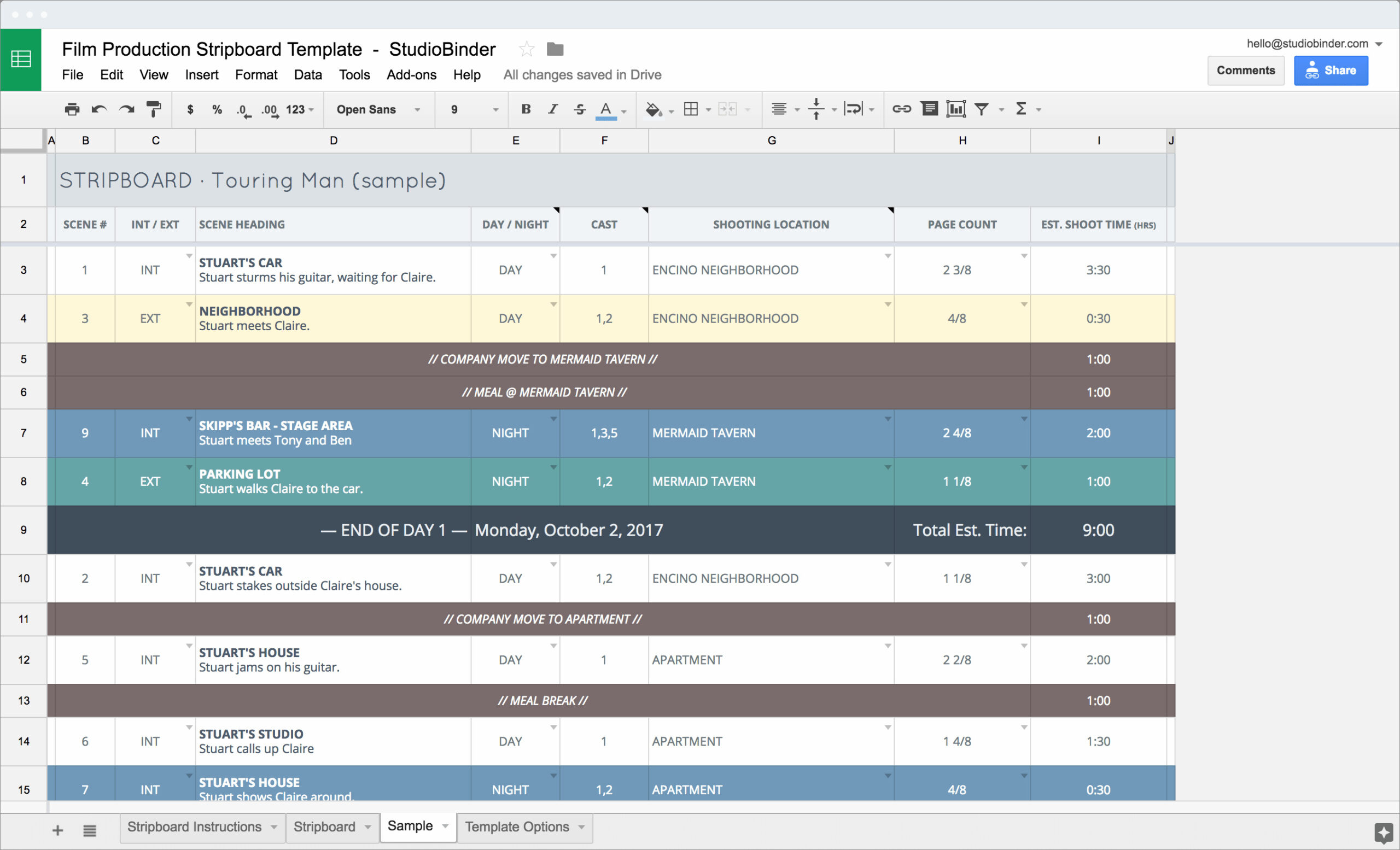
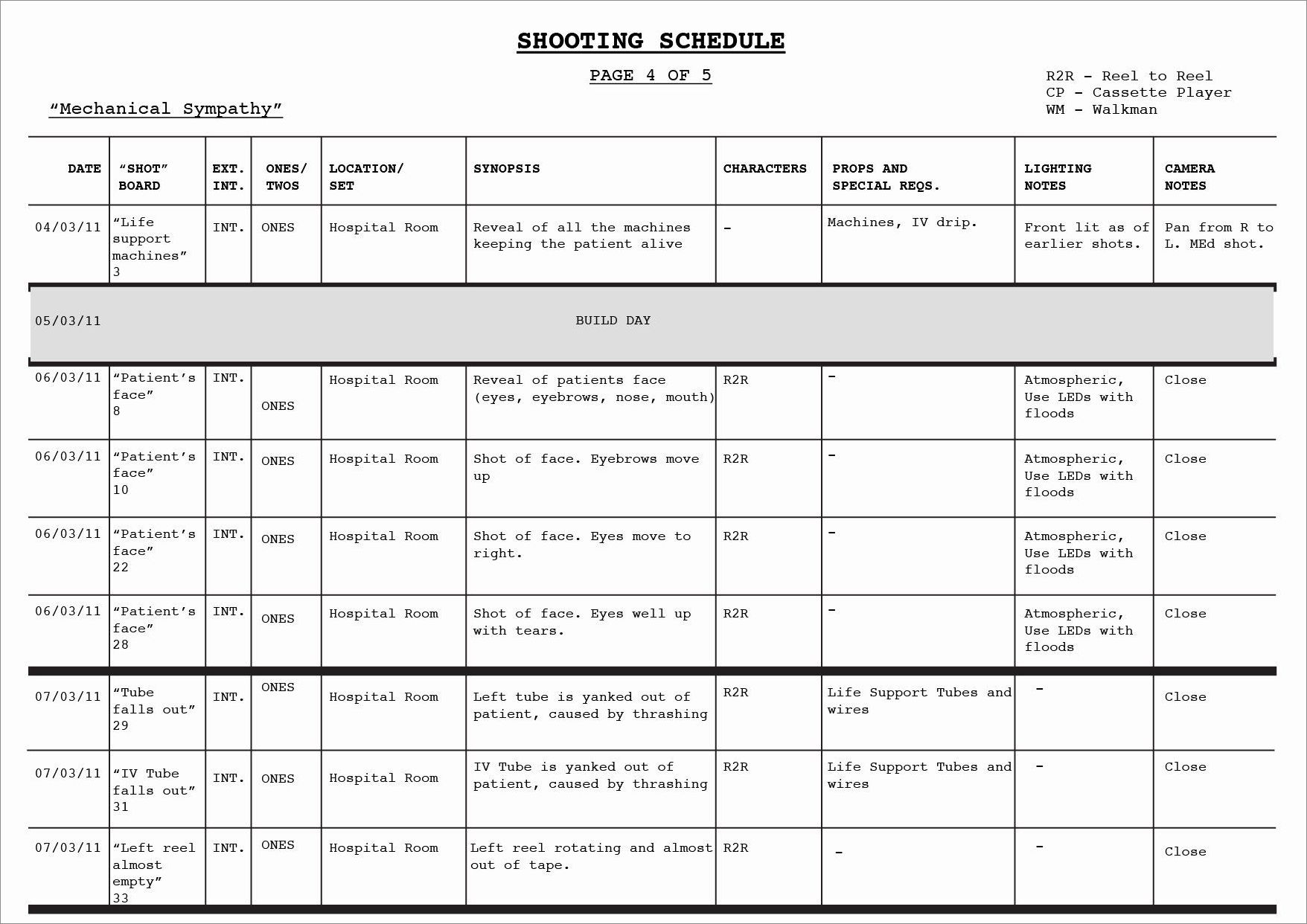
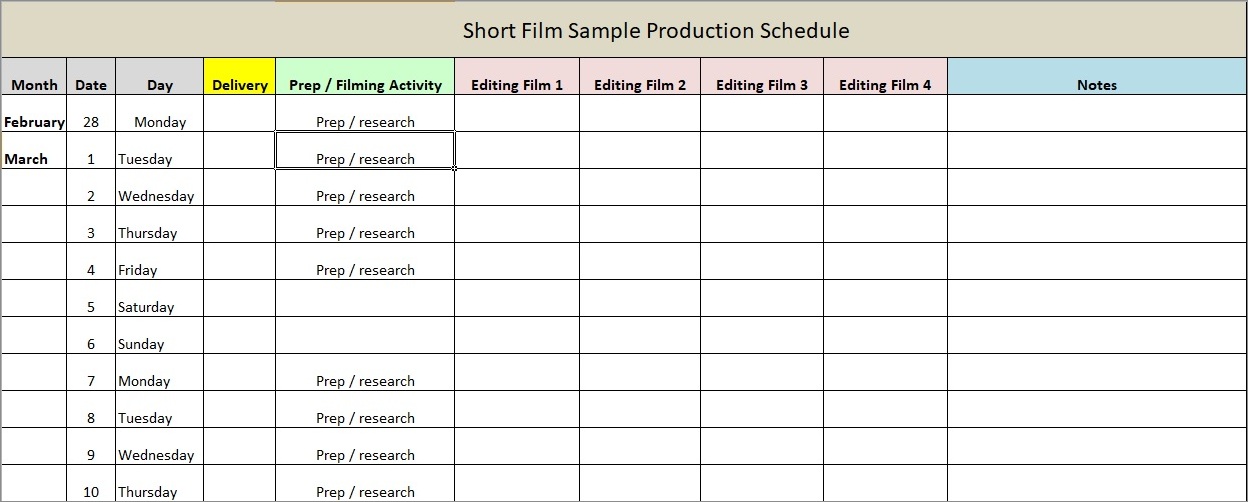
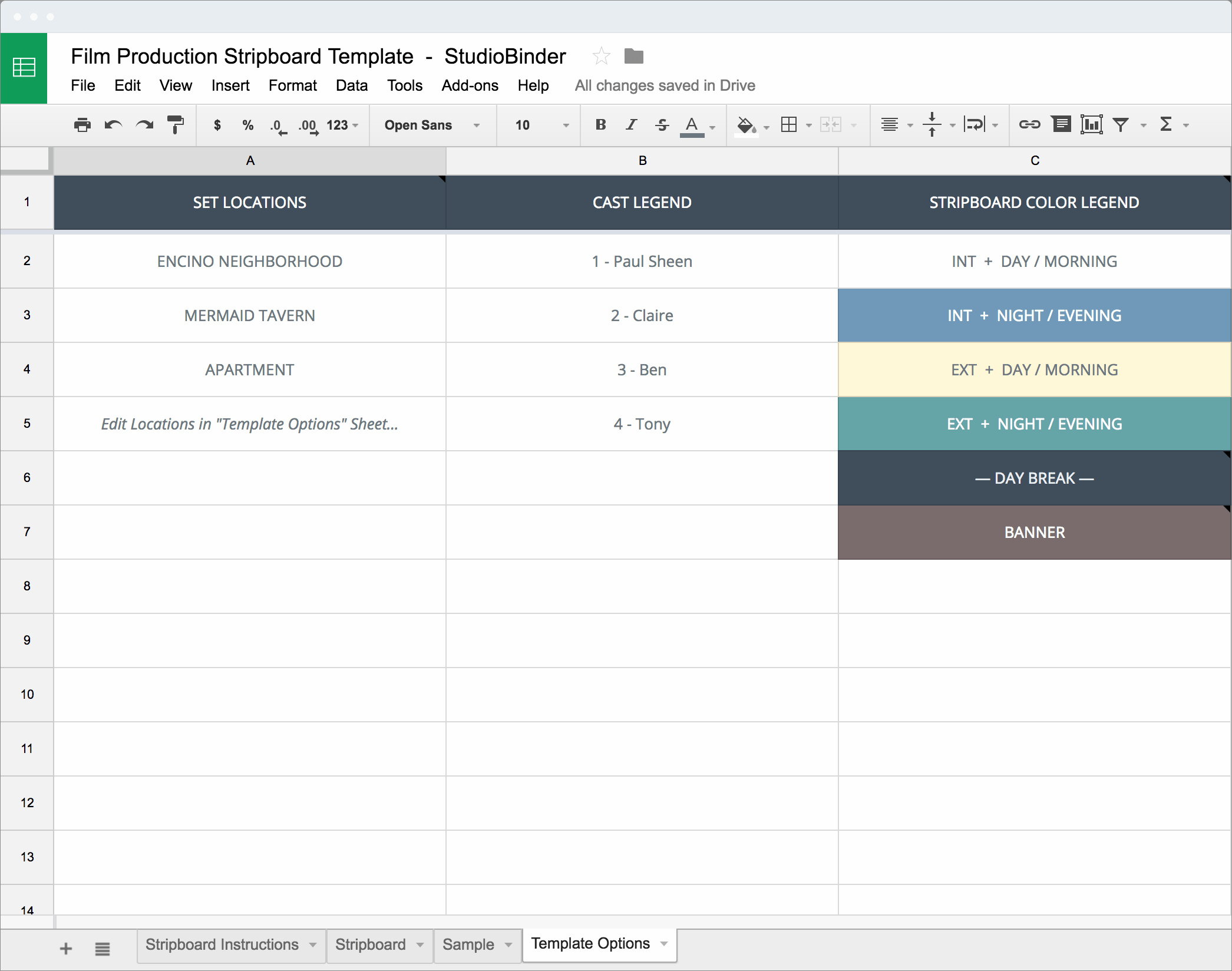
Here is an example of a film schedule:
- Day 1: Exterior location A – Scenes 1, 3, 5 – Cast: Actor A, Actress B – Crew: Director, Director of Photography
- Day 2: Studio location – Scenes 2, 4 – Cast: Actor A, Actor C – Crew: Director, Director of Photography, Production Designer
- Day 3: Exterior location B – Scenes 6, 7 – Cast: Actress B, Actor C – Crew: Director, Director of Photography, Production Designer, Makeup Artist
- Day 4: Interior location – Scene 8 – Cast: Actor A, Actress B, Actor C – Crew: Director, Director of Photography, Production Designer, Makeup Artist
- Day 5: Exterior location C – Scenes 9, 10 – Cast: Actor A, Actress B, Actor C – Crew: Director, Director of Photography, Production Designer, Makeup Artist, Sound Engineer
Tips for a Successful Film Schedule
- Be realistic: Ensure that your schedule is realistic and takes into account the time and resources needed for each task.
- Communicate effectively: Communicate the schedule to all cast and crew members to avoid confusion and ensure everyone is on the same page.
- Stay organized: Keep track of all the details and documents related to the schedule, such as permits, location contracts, and call sheets.
- Stay flexible: Be prepared to make adjustments to the schedule as needed and have contingency plans in place for unexpected circumstances.
- Regularly update: Regularly update the schedule throughout the production process to reflect any changes or updates.
Conclusion
A well-planned film schedule is essential for a successful production. It helps maximize efficiency, control the budget, promote collaboration, and provide flexibility. By following the steps outlined in this article and incorporating the tips provided, you can create an effective film schedule that will ensure your production runs smoothly from start to finish.
Film Schedule Template – Download
